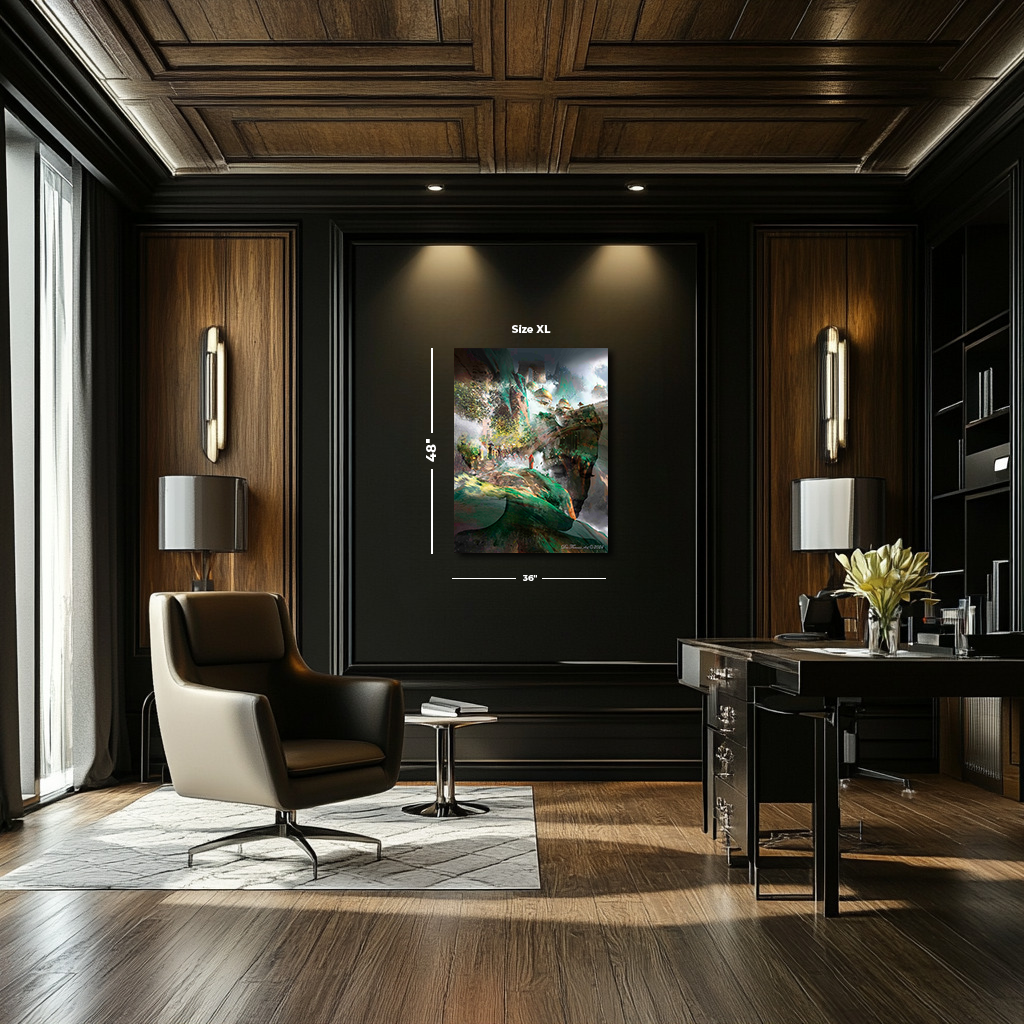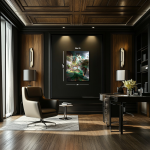Inner Landscapes: The Dreamscape of Parc Monceau
This conceptual collage reinterpretation of Claude Monet’s The Parc Monceau (1878) merges serene landscape and architectural forms into a surreal portrait of inner reflection. Golden-domed structures, lush greenery, and ethereal atmospheres blend seamlessly, forming the tranquil visage of contemplation and introspection. A solitary figure dressed in vibrant red stands amidst this dreamy landscape, symbolizing humanity’s introspective journey through emotional and spiritual worlds. This artwork explores the interplay between external beauty and internal serenity, inviting viewers to reflect upon the intimate relationship between environment, memory, and identity.
Please see Below for Details…
Hotline Order:
Mon - Fri: 07AM - 06PM
404-872-4663
Claude Monet's The Parc Monceau (1878) is more than a simple depiction of an urban oasis; it embodies a deeper exploration of tranquility, nostalgia, and the profound serenity found within fleeting moments of nature amidst city life. Monet’s original intent was to encapsulate the quiet majesty of the park—a carefully cultivated haven of lush greenery, winding paths, and ornamental architecture, set gently against the bustle of Parisian life. Through delicate brushwork, subtle shifts of light, and evocative color palettes, Monet created not merely a landscape, but an intimate portrayal of human introspection and emotional refuge.
This conceptual reinterpretation further evolves Monet’s exploration, merging landscape, architecture, and portraiture into a poetic vision of consciousness itself. The scene transforms from a tangible park into an ethereal collage—where architectural forms, natural elements, and human figures dissolve into one another, forming a surreal, evocative landscape of the inner self. At first glance, viewers see the iconic golden domes and lush greenery of Parc Monceau, but as the gaze lingers, these familiar elements gradually shift, revealing a hauntingly beautiful human visage hidden within the layered contours of the terrain and architecture.
Central to this work is the subtle, powerful portrait of a face, gently emerging from the scene. The face, depicted with closed eyes and a serene expression, embodies tranquility and deep contemplation. It is not merely a portrait in the traditional sense; it symbolizes the essence of reflection, of inner harmony and quietude amid the ceaseless motion of life. The figure’s presence is subtle yet commanding, evoking the idea that landscapes—both external and internal—are inseparable reflections of human emotion and spiritual state.
Golden-domed architecture floats ethereally above, merging seamlessly with clouds, trees, and misty atmospheres, reinforcing the impression of dreams and memory rather than solid reality. The vibrant greens, softly illuminated by Monet’s characteristic interplay of light, shimmer gently, suggesting the fluidity of perception, memory, and imagination. What was once concrete and tangible in Monet’s original scene now seems fragile and ephemeral, much like the very nature of human consciousness and memory.
The pathway winding through the artwork symbolizes the journey of life itself—a solitary figure dressed in red stands at a contemplative distance, gazing upon this dreamlike landscape. This figure represents every individual who walks the path of introspection and self-discovery, searching for meaning and peace amid life’s complexities. Red, a color often symbolic of passion, life, and human spirit, provides a poignant contrast to the gentle greens and luminous golds, emphasizing humanity’s vibrant yet solitary journey through existence.
The scene is rich in metaphor, blending natural and man-made worlds. Architecture, nature, and humanity all interact in an intricate dance, expressing the interconnectedness of human experience. Monet’s fascination with capturing not merely scenery but the emotional resonance of place and time is echoed here in a composition that delves deeper into the psyche, illustrating how external surroundings shape internal landscapes, and vice versa.
This artwork deliberately invites reflection upon how perception transforms reality. Monet’s original park, a physical space of leisure and beauty, now serves as a metaphorical sanctuary for emotional and spiritual renewal. By merging portraiture with landscape, the work suggests that our environment and experiences are continuously reflected in our identities, shaping who we are and how we perceive the world around us. The ephemeral nature of memory, depicted through softly blended colors and gently shifting forms, underscores the transient beauty of existence, encouraging a meditative engagement with the inner self.
In crafting this piece, my intention was to honor Monet’s profound understanding of the emotional significance of place, transcending mere visual representation. This reinterpretation emphasizes the complexity and depth of human consciousness, visualizing how personal experiences, memories, dreams, and emotional landscapes intertwine and influence each other in a perpetual state of flux and harmony.
By transforming Monet’s park into a surreal reflection of inner contemplation, I hope to guide the viewer toward recognizing the quiet beauty and depth that resides within their own internal worlds. It is about finding solace and meaning within the intersections of imagination, memory, and perception, reminding us that our inner lives are vast landscapes filled with hidden beauty, serenity, and profound insight, waiting patiently to be explored and understood.
This composition thus becomes an allegory of perception, memory, and emotional resonance, capturing the eternal human quest for peace and meaning within ourselves and the world we inhabit. Like Monet’s original, it whispers quietly of tranquility, inviting us into a deeper, more meaningful engagement with our own inner landscapes.
Add your review
Your email address will not be published. Required fields are marked *
Please login to write review!
Looks like there are no reviews yet.








